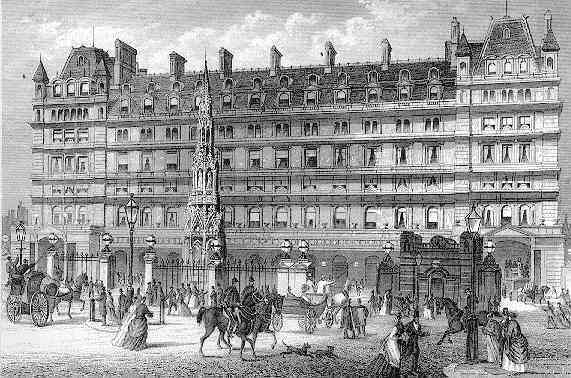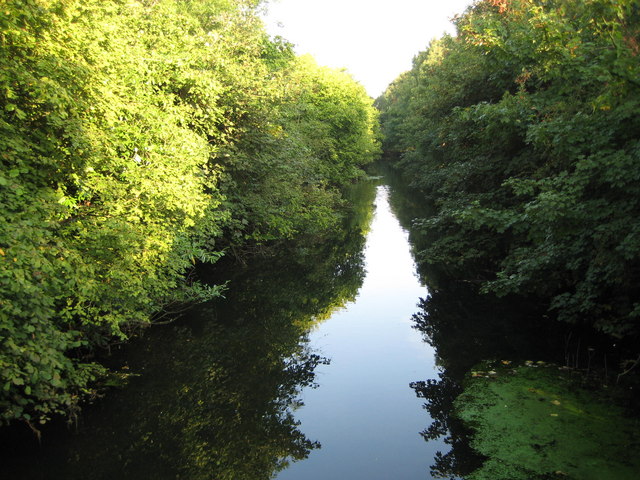|
Great Flood Of 1968
The Great Flood of 1968 was a flood caused by a pronounced trough of low pressure which brought exceptionally heavy rain and thunderstorms to South East England and France in mid-September 1968, with the worst on Sunday 15 September 1968, and followed earlier floods in South West England during July. This was likely the severest inland flood experienced in the Home Counties during the last 100 years. The areas worst hit were Crawley, East Grinstead, Horley, Lewisham, Petersfield, Redhill, Tilbury, Tunbridge Wells and Tonbridge. On 15 September 1968, the 9:50 Charing Cross to Hastings was diverted along the Edenbridge line, but was surrounded by flood water at Edenbridge railway station. 150 passengers spent 12 hours stuck on the train. France In the first seven hours of 15 September 1968 three inches of rain fell on Nice. In Toulon Toulon (, , ; , , ) is a city in the Provence-Alpes-Côte d'Azur region of southeastern France. Located on the French Riviera and t ... [...More Info...] [...Related Items...] OR: [Wikipedia] [Google] [Baidu] |
Catford
Catford is a district in south east London, England, and the administrative centre of the London Borough of Lewisham. It is southwest of Lewisham itself, mostly in the Rushey Green (ward), Rushey Green and Catford South Ward (electoral subdivision), wards. The population of Catford, including Bellingham, London, Bellingham, was 44,905 in 2011. Catford covers most of SE postcode area, SE6 postcode district. The area is identified in the London Plan as one of 35 major centres in Greater London. History Toponymy The origin of the name is unknown. Speculation suggests it may derive from the place where cattle Ford (crossing), crossed the river River Ravensbourne, Ravensbourne in Anglo-Saxon times or from wild cats using the river crossing. Governance Catford is covered by the Rushey Green (ward), Rushey Green and Catford South wards in the London Borough of Lewisham. It also makes up a large part of the Lewisham East (UK Parliament constituency), Lewisham East constituency. Bu ... [...More Info...] [...Related Items...] OR: [Wikipedia] [Google] [Baidu] |
Charing Cross Railway Station
Charing Cross railway station (also known as London Charing Cross) is a London station group, central London railway terminus between the Strand, London, Strand and Hungerford Bridge in the City of Westminster. It is the terminus of the South Eastern Main Line, Southeastern Main Lines to Dover Priory railway station, Dover via Ashford International railway station, Ashford and Hastings railway station, Hastings via Tunbridge Wells railway station, Tunbridge Wells. All trains are operated by Southeastern (train operating company), Southeastern, which provides the majority of commuter and regional services to south-east London and Kent. It is connected to Charing Cross tube station, Charing Cross Underground station and is near to Embankment tube station, Embankment Underground station and Embankment Pier. The station was originally opened by the South Eastern Railway (England), South Eastern Railway in 1864. It takes its name from its proximity to the road junction Charing Cros ... [...More Info...] [...Related Items...] OR: [Wikipedia] [Google] [Baidu] |
1968 In England
Events January–February * January – The I'm Backing Britain campaign starts spontaneously. * January 5 – Prague Spring: Alexander Dubček is chosen as leader of the Communist Party of Czechoslovakia. * January 10 – John Gorton is sworn in as 19th Prime Minister of Australia, taking over from John McEwen after being elected leader of the Liberal Party the previous day, following the disappearance of Harold Holt. Gorton becomes the only Senator to become Prime Minister, though he immediately transfers to the House of Representatives through the 1968 Higgins by-election in Holt's vacant seat. * January 15 – The 1968 Belice earthquake in Sicily kills 380 and injures around 1,000. * January 21 ** Vietnam War: Battle of Khe Sanh – One of the most publicized and controversial battles of the war begins, ending on April 8. ** 1968 Thule Air Base B-52 crash: A U.S. B-52 Stratofortress crashes in Greenland, discharging 4 nuclear bombs. * January 23 – North ... [...More Info...] [...Related Items...] OR: [Wikipedia] [Google] [Baidu] |
1968 Natural Disasters
Events January–February * January – The I'm Backing Britain campaign starts spontaneously. * January 5 – Prague Spring: Alexander Dubček is chosen as leader of the Communist Party of Czechoslovakia. * January 10 – John Gorton is sworn in as 19th Prime Minister of Australia, taking over from John McEwen after being 1968 Liberal Party of Australia leadership election, elected leader of the Liberal Party of Australia, Liberal Party the previous day, following the disappearance of Harold Holt. Gorton becomes the only Australian Senate, Senator to become Prime Minister, though he immediately transfers to the Australian House of Representatives, House of Representatives through the 1968 Higgins by-election in Holt's vacant seat. * January 15 – The 1968 Belice earthquake in Sicily kills 380 and injures around 1,000. * January 21 ** Vietnam War: Battle of Khe Sanh – One of the most publicized and controversial battles of the war begins, ending on April 8. * ... [...More Info...] [...Related Items...] OR: [Wikipedia] [Google] [Baidu] |
Floods In England
A flood is an overflow of water ( or rarely other fluids) that submerges land that is usually dry. In the sense of "flowing water", the word may also be applied to the inflow of the tide. Floods are of significant concern in agriculture, civil engineering and public health. Human changes to the environment often increase the intensity and frequency of flooding. Examples for human changes are land use changes such as deforestation and removal of wetlands, changes in waterway course or flood controls such as with levees. Global environmental issues also influence causes of floods, namely climate change which causes an intensification of the water cycle and sea level rise. For example, climate change makes extreme weather events more frequent and stronger. This leads to more intense floods and increased flood risk. Natural types of floods include river flooding, groundwater flooding coastal flooding and urban flooding sometimes known as flash flooding. Tidal flooding may inclu ... [...More Info...] [...Related Items...] OR: [Wikipedia] [Google] [Baidu] |
Chew Stoke Flood Of 1968
Chew Stoke Flood was a heavy rain event and severe flash flood which occurred on 10 July 1968, affecting Somerset and Southwest England in particular the Chew Valley and some areas of Bristol, notably Bedminster. The River Chew suffered a major flood in 1968 with serious damage to towns and villages along its route, including sweeping away the bridge at Pensford. On 10 July 1968, torrential rainfall, with falling in 18 hours on Chew Stoke, double the area's average rainfall for the whole of July, led to widespread flooding in the Chew Valley, and water reached the first floor of many buildings. The damage in Chew Stoke was not as severe as in some of the surrounding villages, such as Pensford where it swept away the bridge over the A37 and damaged the railway viaduct so badly that it never reopened. It also flooded 88 properties in Chew Magna with many being inundated with of water. Fears that the Chew Valley Lake dam would be breached caused considerable anxiety. On th ... [...More Info...] [...Related Items...] OR: [Wikipedia] [Google] [Baidu] |
July 1968 England And Wales Dust Fall Storms
July is the seventh month of the year in the Julian and Gregorian calendars. Its length is 31 days. It was named by the Roman Senate in honour of Roman general Julius Caesar in 44 B.C., being the month of his birth. Before then it was called Quintilis, being the fifth month of the calendar that started with March. It is on average the warmest month in most of the Northern Hemisphere, where it is the second month of summer, and the coldest month in much of the Southern Hemisphere, where it is the second month of winter. The second half of the year commences in July. In the Southern Hemisphere, July is the seasonal equivalent of January in the Northern hemisphere. "Dog days" are considered to begin in early July in the Northern Hemisphere, when the hot sultry weather of summer usually starts. Spring lambs born in late winter or early spring are usually sold before 1 July. Symbols July's birthstone is the ruby, which symbolizes contentment. Its birth flowers are the lark ... [...More Info...] [...Related Items...] OR: [Wikipedia] [Google] [Baidu] |
1947 Thames Flood
The 1947 Thames flood was the most severe flood of the River Thames in the 20th century, affecting much of the Thames Valley as well as elsewhere in England during the middle of March 1947 after a severe winter. The worst in over 100 years, it was exacerbated by an extremely high tide. Background The source of the Thames is in Gloucestershire, and it flows east through Oxfordshire. Records have been kept of its water levels since 1893. In January 1947, the country—particularly the southeast—had been hit by blizzards, which were severe enough to freeze the upper reaches of the River Thames. Winter storms continued into February. Before the flooding, 117 mm (4.6 inches) of precipitation and snow had fallen; the peak flow was 61.7 billion litres of water per day and the damage cost a total of £12 million to repair. The heavy snow had been followed by a period of relatively warm weather, which caused the snow to quickly melt on top of the still-frozen ground, whi ... [...More Info...] [...Related Items...] OR: [Wikipedia] [Google] [Baidu] |
Electric Power Transmission
Electric power transmission is the bulk movement of electrical energy from a generating site, such as a power plant, to an electrical substation. The interconnected lines that facilitate this movement form a ''transmission network''. This is distinct from the local wiring between high-voltage substations and customers, which is typically referred to as electric power distribution. The combined transmission and distribution network is part of electricity delivery, known as the electrical grid. Efficient long-distance transmission of electric power requires high voltages. This reduces the losses produced by strong currents. Transmission lines use either alternating current (AC) or direct current (DC). The voltage level is changed with transformers. The voltage is stepped up for transmission, then reduced for local distribution. A wide area synchronous grid, known as an ''interconnection'' in North America, directly connects generators delivering AC power with the same rela ... [...More Info...] [...Related Items...] OR: [Wikipedia] [Google] [Baidu] |
Toulon
Toulon (, , ; , , ) is a city in the Provence-Alpes-Côte d'Azur region of southeastern France. Located on the French Riviera and the historical Provence, it is the prefecture of the Var (department), Var department. The Commune of Toulon has a population of 176,198 people (2018), making it France's 13th-largest city. It is the centre of an urban unit with 580,281 inhabitants (2018), the ninth largest in France by population. Toulon is the second largest French city by urban area on the Mediterranean coast after Marseille. Toulon is an important centre for naval construction, fishing, wine making, and the manufacture of aeronautical equipment, armaments, maps, paper, tobacco, printing, shoes, and electronic equipment. The military port of Toulon is the major navy, naval centre on France's Mediterranean coast, home of the French aircraft carrier ''French aircraft carrier Charles de Gaulle, Charles de Gaulle'' and her battle group. The French Mediterranean Fleet is based in ... [...More Info...] [...Related Items...] OR: [Wikipedia] [Google] [Baidu] |
Nice
Nice ( ; ) is a city in and the prefecture of the Alpes-Maritimes department in France. The Nice agglomeration extends far beyond the administrative city limits, with a population of nearly one millionDemographia: World Urban Areas , Demographia.com, April 2016 on an area of . Located on the French Riviera, the southeastern coast of France on the , at the foot of the French Alps, Nice is the second-largest French city on the Mediterranean coast an ... [...More Info...] [...Related Items...] OR: [Wikipedia] [Google] [Baidu] |






